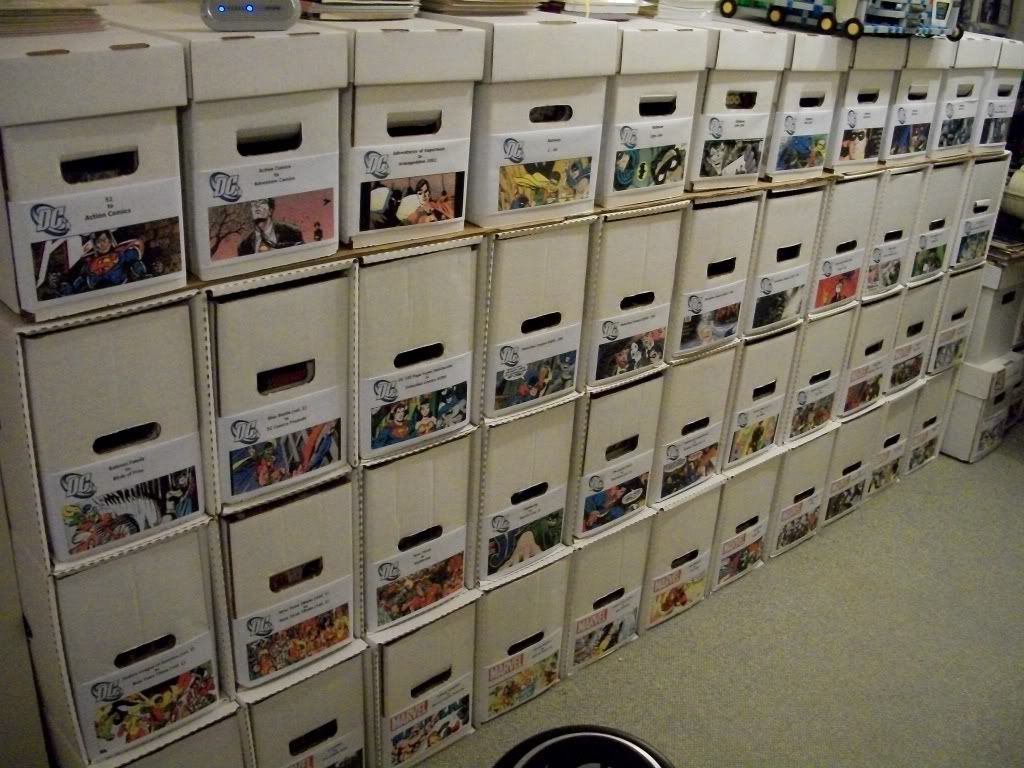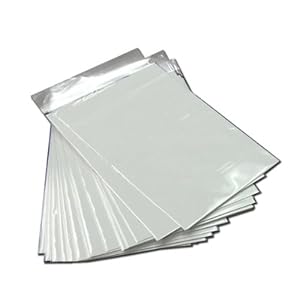
There are a few components to the collecting stage:
Figure out what you want to collect.
Decide how you're going to get it.
Store it.
1. Figure out what you want to collect. You've done the initial purchasing. Hopefully you've found some characters or series that appeal to you in this initial batch. If not, I will be posting a "Suggested Reads" article soon.
A. Now that you have a series in mind, set up a Pull List at your local/favorite comic shop, as mentioned in the last post. This will allow you to stay current or at least have access to current issues easily, without any hunting. If you're like me, you will also want to get the back issues that came before -- you don't have to start from issue one; most series try to be fairly accessible no matter where you jump in, as long as you're not in the middle of a titled run (a comic book that says "2 of 4" on the cover might not be the best place to start). I start Amazing Spider-Man with "Character Assassination" and have gotten ever issue that's followed. I'm slowly collecting back issues, reading them only when I've got a complete run.
B. As other interesting characters are introduced in the series you've been reading, consider picking up their issues as well. Most major comics have cross-overs frequently.
C. Don't be afraid to try something new! Absolutely judge a book by it's cover -- if you hate it, you at least have an interesting image. If you love it, you now have something new to collect.
2. Decide how you're going to get it. A Pull List will keep you current, but it doesn't help you with getting your back issues. You'll need to find some alternative methods.
A. I don't suggest eBay and Amazon for this -- they can be way overpriced, especially when shipping is added on. If you MUST do online shopping, I suggest using MyComicShop.com. It's a really great website for those hard to find back issues. I've also seen that they price their items well.
B. Most every comic book shop (size permitting) have long boxes full of back issues, organized by series. This isn't a terrible way to get back issues, but can be expensive -- unless there is a sale, you'll be paying cover price or more, depending on issue rarity.
C. My favorite way is to find the stores with cheap bins. These are long boxes that some stores put aside, filling them with random issues for a set price. Just this weekend, I found an interesting selection at ToyWiz in Nanuet, NY. They didn't have a lot of back issues, but they had about 10 long boxes marked at $0.15 an issue, $.10 if you bought 50 or more. Adding to that, they didn't cherry pick their selection -- as far as I can tell, anything they had a lot of extra makes it into the box. I will be going back the next time I'm on that side of the bridge... potentially just buying all the boxes.
ii. Cheap bins won't be organized, but you can find a lot of really cheap issues this way, with some luck. As long as you're not agonizing over getting a certain issue or run ASAP, this can really be the best way to go about it.
D. Buy sets! Similar to cheap bins, many shops have a section for "collected sets". These can range in price from very expensive to dirt cheap. This is dependent on the store, really. Some are trying to turn a profit on rare/popular runs. Others just need to clear space. It is awesome to pick up a set and be able to read it without missing an issue. This is my other favorite way to do things. This is especially viable at comic cons.
3. Store it. Before long, you're going to have to find a way to store your comic books. Having them in a pile on the floor isn't going to cut it, both because they tend to slide around and because this will potentially damage books.
A. Get appropriate packaging. A good store will give you bags and boards (image below) for your current books.
They might not do that for your back issues and they definitely won't for stuff from the cheap bin. That's ok, it's not too expensive to buy them yourselves -- $15-20 should get you 100 bags and boards.
B. Get appropriate boxes. You know your storage space better than I do. I have a bit more room and prefer to store my books in long boxes, similar to the image at the start of this post. There are also short boxes, which are just smaller versions. You can also get fancy boxes that slide out instead of needing to remove the cover, but they are more expensive and require even more space.
C. Display your favorites. If you love a certain series or issue, either for content or cover, or maybe just because it's rare, find a way to display it. I've seen a few options, but I prefer to have mine in frames and displayed on walls. For issues that aren't super rare/expensive, I suggest just getting a bunch of document frames from a dollar store and use those to hang the comics. For your rare/expensive issues, you should be cautious -- sunlight can eventually damage comics. There are certain picture frames that have special glass to block sunlight that would still work. I personally keep my rare issues separate from my others and only displayed where sunlight won't hit them.
That's all for now -- the very basics of getting in to comics. I may do some additional posts, especially one dealing with collecting rare/valuable issues especially, but that will be for later. For now, if you have any questions, suggestions, comments, let me know!







Now I officially know why your dork room is a dark cave.
ReplyDelete